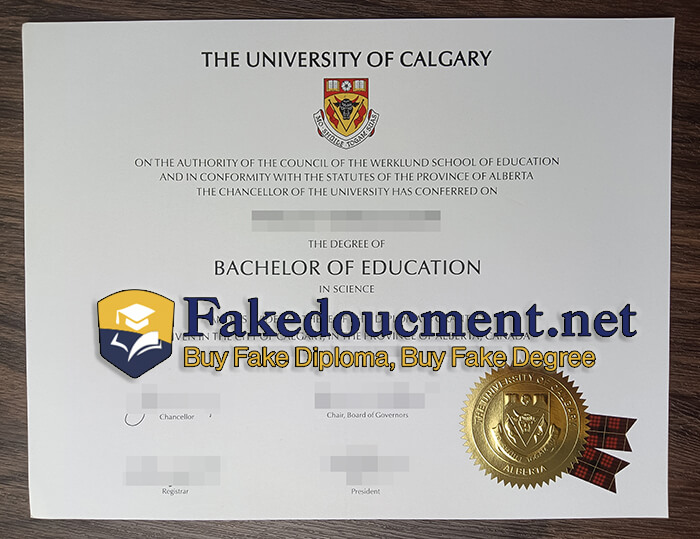
Where to order fake University of Calgary degree certificate online? The best way to buy a realistic University of Calgary diploma certificate onine? I would like to buy a realistic University of Calgary degree certificate online. The University of Calgary is a public research university located in Calgary, Alberta, Canada. It was founded in 1966 and has grown to become one of Canada’s top research-intensive universities.
The university offers a wide range of undergraduate and graduate programs in various fields, including arts, sciences, engineering, business, and health sciences. The University of Calgary is known for its strong research programs and collaborations with industry partners. It is also home to several research institutes and centers, including the Hotchkiss Brain Institute, the Alberta Children’s Hospital Research Institute, and the Institute for Quantum Science and Technology.
The University of Calgary was established in 1966, but its roots date back more than half a century earlier to the establishment of the Normal School in Calgary in 1905. The Alberta Normal School was established in Calgary to train primary and secondary school teachers in the new province.
The Calgary Normal School was absorbed by the University of Alberta’s Faculty of Education in 1945, and operated as a part of its Calgary branch campus, a satellite campus of the University of Alberta. Operating from the west wing of the Provincial Institute of Technology and Art, the Calgary University Committee was formed 1946, in an effort to lobby for separate permanent facilities for the branch campus.
In July 1957, the University of Alberta signed a one dollar lease with the City of Calgary, for 121.4 hectares (300 acres) of land. In 1958, the University of Alberta changed the name of the branch campus to the “University of Alberta in Calgary,” and unveiled plans for new permanent facilities on the leased land.
The new campus opened its first permanent facilities in October 1960, the Arts and Education Building (presently the Administration Building), and the Science and Engineering Building (presently Science A).
In May 1965, the satellite campus was granted academic and financial autonomy from the University of Alberta. In the following year, in April 1966, the institution was formally made into an independent university, with the passage of the Universities Act by the Legislative Assembly of Alberta. The university was modelled on the American state university (similar to the University of Alberta), with an emphasis on extension work and applied research.
The governance was modelled on the provincial University of Toronto Act of 1906 which established a bicameral system of university government consisting of a senate (faculty), responsible for academic policy, and a board of governors (citizens) exercising exclusive control over financial policy and having formal authority in all other matters. The president, appointed by the board, was a link between the bodies to perform institutional leadership.
In the early 20th century, professional education expanded beyond theology, law and medicine. Graduate training based on the German-inspired American model of specialized course work and the completion of a research thesis was introduced.
The university’s first president, Herbert Stoker Armstrong, held a strong belief that “although the university is accountable to the society that supports it, the university must insist on playing a leadership role in intellectual matters if it is to be worthy of the name.”






